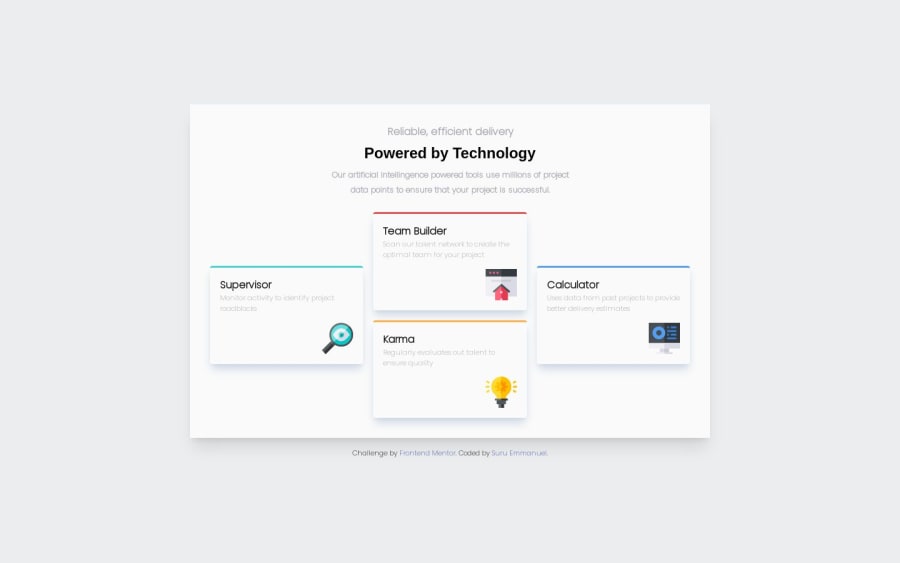
Submitted over 1 year ago
Semantic HTML5 markup, CSS custom properties , Flexbox, Tailwindcss
#semantic-ui#tailwind-css#bootstrap
@suruaino
Design comparison
SolutionDesign
Solution retrospective
I encountered some challenges in the process of building this project prompting me to ask the following questions.
How can I make the EVERY content in a flex container to have equal sizes no matter the content that they hold?
Someone should please explain to me why every padding on the main works perfectly on chrome but behaves funny in Firefox when on a wider screen.
Community feedback
Please log in to post a comment
Log in with GitHubJoin our Discord community
Join thousands of Frontend Mentor community members taking the challenges, sharing resources, helping each other, and chatting about all things front-end!
Join our Discord
